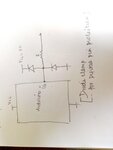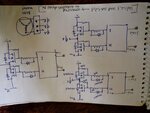Nihaludeen
Member level 2
I am using Arduino as my controller, I want to protect the digital pin of controller before giving it to the circuit. And I am using the digital pin as output.
Is diode clamp is good solution for it?
And after I connect the diode clamp circuit to the arduino's output, the controller's stucks .
Any solution for protection oupur pins of controller.
I have attached the image below.


Is diode clamp is good solution for it?
And after I connect the diode clamp circuit to the arduino's output, the controller's stucks .
Any solution for protection oupur pins of controller.
I have attached the image below.

